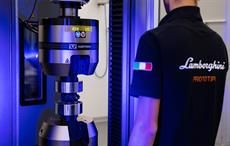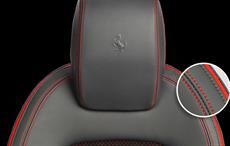Solvay’s Composite Materials research teams in Havre de Grace, Maryland is working towards aircraft without fasteners. The company has already launched FusePly for the high-performance requirements of the aerospace industry. It was specifically designed to be compatible with a wide range of epoxy prepregs and most adhesives currently in use in the market.
The aim is to create a completely bonded aircraft which will be easier to assemble and will be much lighter.Solvay's Composite Materials research teams in Havre de Grace, Maryland is working towards aircraft without fasteners. The company has already launched FusePly for the high-performance requirements of the aerospace industry. It was specifically designed to be compatible with a wide range of epoxy prepregs and most adhesives currently in use in the market.#
Composite materials are slowly but surely taking over when it comes to making airplanes. As they’re much lighter than metal, the savings they enable in terms of fuel consumption and carbon dioxide emissions are considerable. The next step is to make aircraft even lighter by getting rid of mechanical fasteners. That’s what FusePly was created for. Eliminating rivets also enables increased design freedom, faster assembly and higher structural strength, as it removes the need to drill hundreds of holes in the parts.
The way FusePly works is that it makes composite part surfaces “chemically active” as it’s cured in the autoclave at the same time as the composite itself. The surface is then ready to create a chemical bond with the adhesive used to bond it to another part.
“This is a completely novel approach; no one else on the market is offering a comparable solution,” says Scott Brown, product manager at Solvay’s Composite Materials. “The chemical structures of the two materials combine, basically creating new molecules, so instead of a mechanical bond, you get a chemical one, which is much more reliable.”
In other words, instead of simply sticking together, the parts fuse with one another. “Under a microscope, you couldn’t tell where one part ends and the other begins. It’s as if the separate parts and the adhesive have all become one continuous part.”
FusePly was launched commercially in 2018, specifically for the high-performance requirements of the aerospace industry. It was specifically designed to be compatible with a wide range of epoxy prepregs and most adhesives currently in use in the market. “We have data that’s convincing enough for them to initiate their own testing,” explains Scott. “Our customers are starting small, but through real-world testing they will gain confidence in FusePly.”
In the extreme, one could imagine in the near future a super lightweight aircraft completely rid of fasteners altogether. Entirely assembled with FusePly, it would become one big, fully bonded structure. “We have a few particularly advanced customers who are definitely headed that way,” says Scott.
Fibre2Fashion News Desk (SV)


